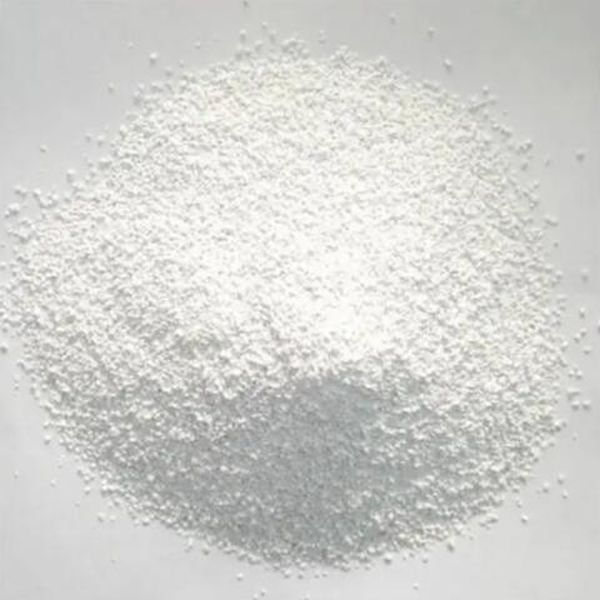Brominal can control broad-leaved weeds at the bud stage and annual dicotyledonous weeds
Brominal, also known as companion, is a triazabenzene-type moderately toxic herbicide. It and its salts and esters are selective post-emergent contact herbicides with certain systemic activity. The chemical name is 3,5- Dibromo-4-hydroxy-1-cyanobenzene. The original drug is a brown solid with a melting point of 188 to 192°C and a vapor pressure of 6.7×10-3Pa at 25°C. The pure product is a white solid with a melting point of 194 to 195°C, slightly soluble in water, soluble in acetone, and 20°C in water. The solubility is 130mg/L. Solubility (25℃): acetone, cyclohexanone 170g/L, methanol 90g/L, ethanol 70g/L, petroleum <20g/L, benzene 10g/L, tetrahydrofuran 410g/L, dimethylformamide 610g/ L. It is very stable in dilute acids and dilute bases and can form water-soluble alkali metal salts and amine salts. Some of its esters are oil-soluble. This product is stable to UV and below the melting point. Can be absorbed by leaves, inhibit photosynthesis, and cause weed tissue necrosis. It is mainly used to control broad-leaved weeds in the bud stage after buds in cereals, flax, garlic, corn, onions, sorghum and newly planted turf. Mixed with other herbicides, it can expand the herbicidal spectrum. Applicable to wheat, barley, rye, corn, sorghum, flax and other crop fields, to control broad-leaved weeds Polygonum, quinoa, amaranth, Astragalus, nightshade, cocklebur, wheat family, swamp, wild flowers , Buckwheat vines and other annual dicotyledonous weeds. Brominal is a moderately toxic herbicide.
Instructions:
(1) Wheat. In the 3 to 5 leaf stage of wheat, broad-leaved weeds are almost uniform, and they are applied before the four-leaf stage, when they grow vigorously. Use 22.5% farmland emulsifiable concentrate 1.5~2.5L/hm2 (active ingredient 337.5~562.5g), add 30 liters of water and spray evenly. Bannong can be mixed with 2,4-D butyl ester or 2 methyl 4 chlorine to improve the efficacy and expand the herbicidal spectrum. Generally, the ratio is 280-337.5 g of the active ingredient of land accompanying agriculture and 25-30 g of the active ingredient of 2,4-D-butyl ester or 2 methyl 4 chloride. This mixture can only be applied at the wheat tillering stage and cannot be used after the jointing period begins. In order to control broad-leaved weeds and treat wild oats, the companion farmer, Hecailing and wild swallows are mixed directly. The dosage is the same as that of single use. The suitable period of application is the wild oats 3 to 4 leaf stage.
(2) Corn and sorghum. At the 3-8th leaf stage, use 22.5% farmland emulsifiable concentrate 1.25-2L/hm2 (effective ingredient 280-450g), add water 30L stems and leaves to spray evenly on the weeds. Companion farmers can be mixed with atrazine, and companion farmers can be used alone. Atrazine uses active ingredients 750~1125g/hm2, and corn is applied at the 4~5 leaf stage.
(3) Linen. When the flax is applied at 5-10 cm, the active ingredients of land use should not exceed 280g/hm2. It is not safe to apply flax after pregnancy.
Precautions:
(1) When the farmer is involved in low-temperature or high-humidity weather, the herbicidal effect may be reduced and the safety of the crop may be reduced, especially flax. When the temperature exceeds 35℃ and the humidity is too high, the pesticide cannot be applied, otherwise phytotoxicity will occur.
(2) No rain within 6 hours after application to ensure the efficacy.
(3) Farmers with land should not mix with fertilizers or add additives, otherwise it will cause crop damage.
(4) The daily allowable intake (ADI) of brominal in humans is 0.05 mg/kg, and the maximum residue limit (MRL) in cereals recommended by the United States is 0.1 mg/kg.
(5) Avoid contact of the agent with the skin and eyes. If accidentally splashed into the eyes or on the skin, rinse immediately with plenty of water. Avoid inhalation of medicament mist. If swallowed, do not induce vomiting; if the patient is in a comatose state, it should be placed in a ventilated place and seek medical treatment immediately. There is no special antidote for this medicine, and it should be treated according to symptoms.
(6) Avoid the pollution of ponds, rivers and other water sources by the residual liquid medicine. Empty containers that are used up should be buried deep underground in non-planting areas and away from water sources.
